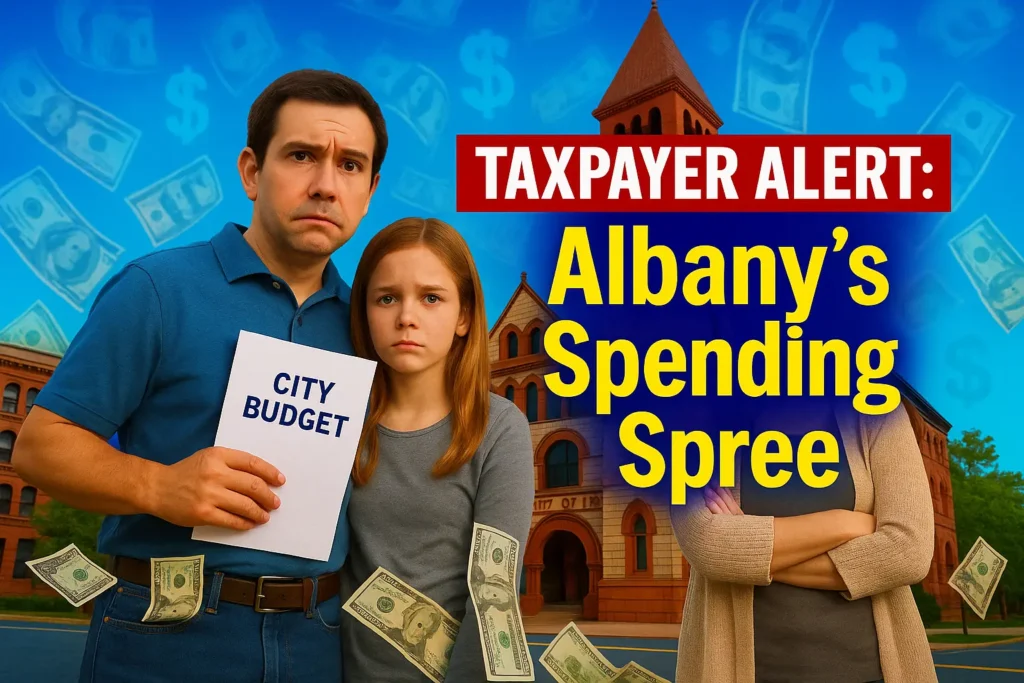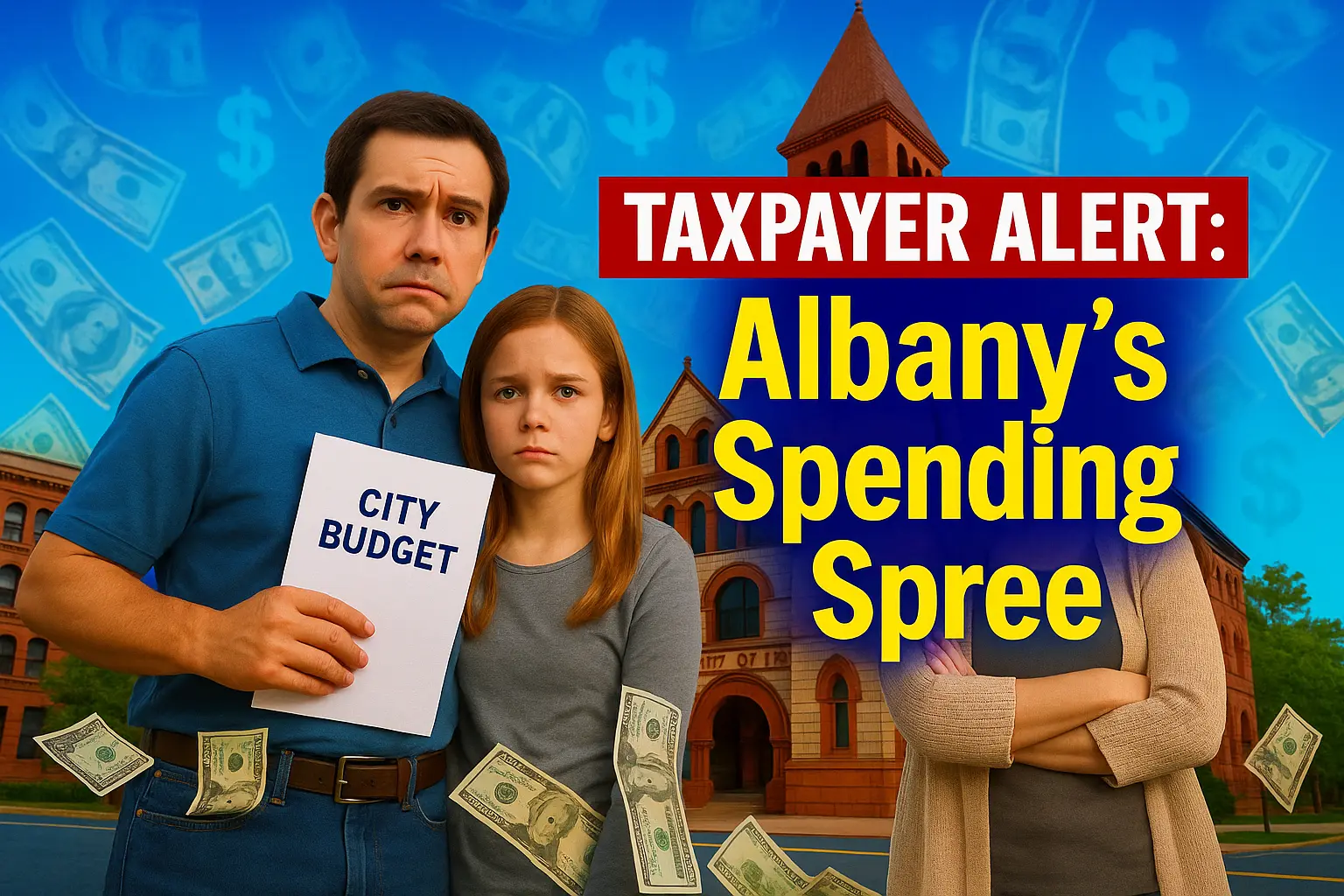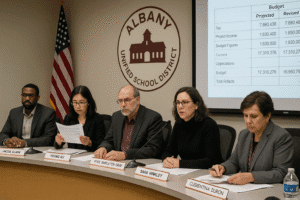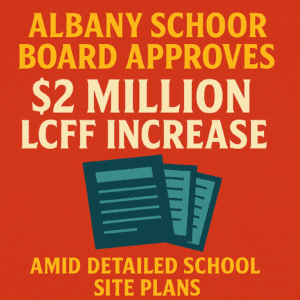TAXPAYER ALERT: Albany’s Spending Spree Leaves Residents Footing the Bill

By Tom Wong, Independent Investigative Reporter
In a city where the average family struggles to make ends meet, Albany’s elected officials continue to burden taxpayers with bloated budgets and questionable spending priorities. The latest fiscal maneuvers by the Albany City Council reveal a disturbing pattern of fiscal irresponsibility that demands immediate public scrutiny.
The Numbers Don’t Lie
Albany residents, with a median household income of just $59,485, are being asked to shoulder an increasingly heavy burden as city officials approve one spending measure after another. The city’s 43,700 households are facing the consequences of decisions made behind closed doors, with little transparency or accountability.
An analysis of the city’s 2025 budget reveals that while Albany families tighten their belts, city officials continue to expand government programs and increase administrative costs. Mayor Kathy Sheehan’s proposed 2025 budget claims to address critical needs, but a closer examination reveals concerning patterns of spending that prioritize bureaucracy over taxpayers.
Hidden Costs and Growing Liabilities
What Albany officials won’t tell you is the true cost of their decisions. When accounting for benefits packages that typically add 35-40% to base salaries, the total compensation for city executives far outpaces what average citizens earn. This growing disparity between public servants and the public they serve represents a fundamental breakdown in representative government.
More troubling still are the unfunded liabilities that remain largely hidden from public view. These financial time bombs threaten to explode in coming years, forcing either massive tax increases or devastating cuts to essential services. Either way, it’s the hardworking families of Albany who will pay the price.
A Crisis of Priorities
“The cost of maintaining roads and sidewalks and providing police, fire, and emergency services to accommodate and protect the tens of thousands of people who come to our City each day is borne entirely by our property taxpayers,” Mayor Sheehan stated in her budget presentation.
What the Mayor fails to acknowledge is how her administration’s spending choices have contributed to this burden. Rather than focusing on core government functions that benefit all residents, the Council has repeatedly approved pet projects and initiatives that serve narrow interests while draining the public treasury.
The Common Council’s approval of a $221 million budget for 2025 represents a significant increase over previous years, with insufficient attention to fiscal restraint or long-term sustainability. While adding $125,000 for housing-related services might sound compassionate, it fails to address the structural issues driving Albany’s affordability crisis.
Lack of Transparency Compounds the Problem
Albany’s budget process has faced growing criticism for its secretive nature and lack of transparency. Despite legal requirements for a minimum three-day transparency period between when bills are printed and voted on, Albany officials have repeatedly sidestepped these important safeguards.
Reinvent Albany, a government watchdog organization, has described the process as “cynical Albany at its worst,” highlighting how closed-door negotiations and last-minute changes prevent meaningful public input.
This systematic exclusion of taxpayers from decisions that directly impact their financial well-being represents a fundamental breakdown in democratic governance. When officials operate in the shadows, accountability becomes impossible.
The Conservative Alternative
Other municipalities have demonstrated that fiscal responsibility and effective governance can go hand in hand. By prioritizing core functions, eliminating waste, and respecting taxpayers, these communities have achieved better outcomes at lower costs.
The solution for Albany begins with transparency. Citizens deserve to know exactly how their money is being spent and what results are being achieved. Next comes accountability, with clear metrics for success and consequences for failure. Finally, a return to limited government that focuses on essential services rather than expanding bureaucracy.
A Call to Action
Albany taxpayers must demand better from their elected officials. By attending public meetings, scrutinizing budget documents, and holding representatives accountable at the ballot box, citizens can reclaim control over their government and their tax dollars.
The time has come for Albany residents to ask hard questions: Why does the city government continue to grow while the private sector struggles? Why are taxpayers asked to sacrifice while public officials enjoy generous compensation packages? And most importantly, who is truly being served by the current system?
The answers to these questions will determine whether Albany continues down its current path toward fiscal crisis or changes course toward sustainable governance that respects the rights and resources of those who pay the bills.
#AlbanyTransparency #AlbanyBudgetWatch #AlbanyTaxpayerAlert
Sources: Albany Demographics, Albany Common Council approves $221 million 2025 budget, News Flash • Albany Mayor Kathy Sheehan Presents 2025 City Budget, Reinvent Albany










